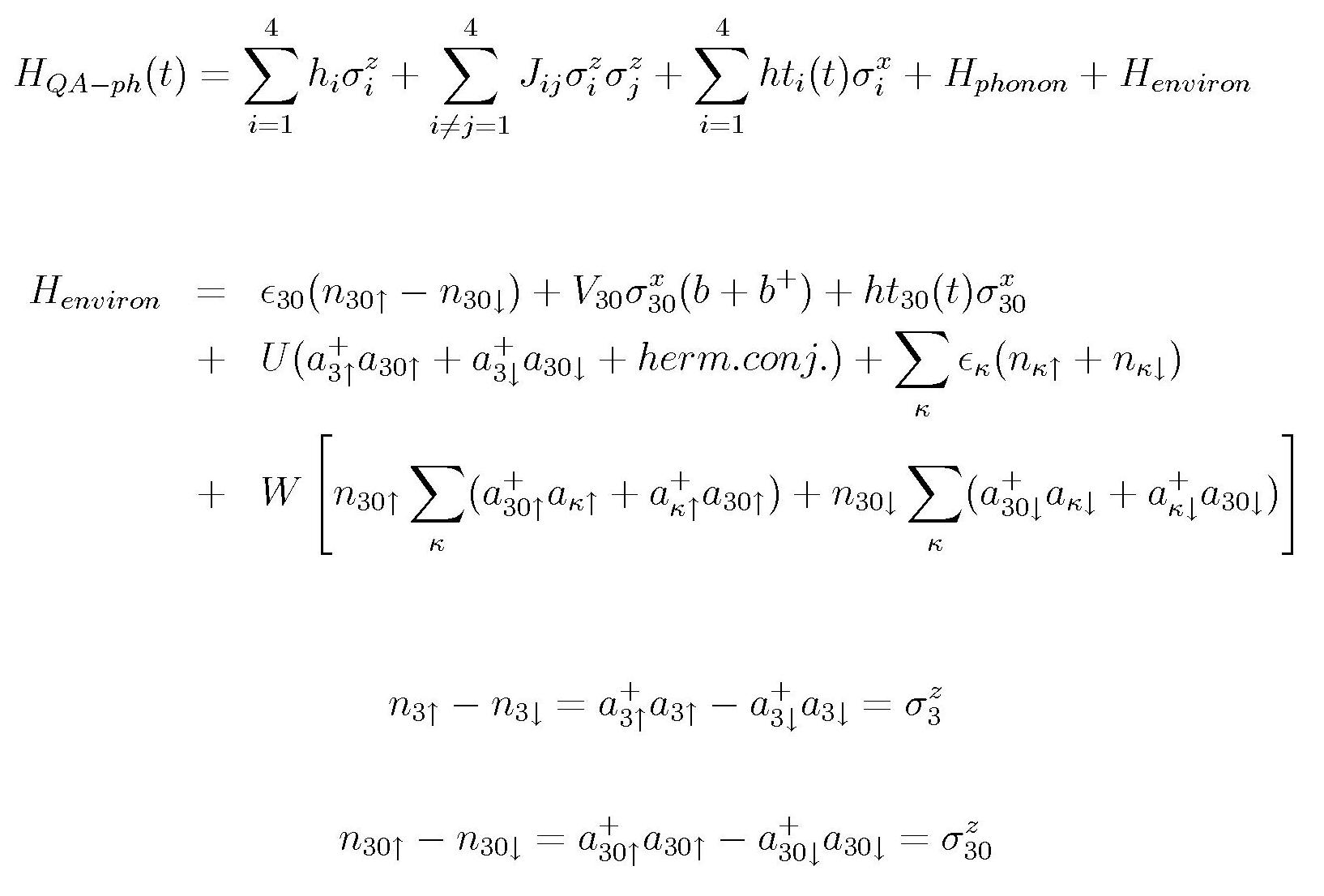zum Hauptkapitel Emerging Quantum Mechanics:
Entanglement to the environment is expected to restore the adiabatic development
of the 4 qubit system by hindering the effect of the phonons. The geometric model
has a single SQUID with supercurrent in one or the reverse directions, corresponding
to spin 0 and spin 1. In the Josephson junction the electrons
are scattered by the atoms. In the Josephson junction the electron currents are normal
currents and the electron wave functions, having non-zero amplitudes in the
region of the atom nuclei, entangle with environmental modes. The result is a
very long lifetime in each eigtenstate.
\noindent The Hamiltonian is:

The additional degrees of freedom for the third qubit and the environs have to be
introduced as additional components in the many-particle basis states:

using the notation |i> for the states of the third qubit and |\kappa> for the excited
environmental states. i assumes the values 0,1,30\uparrow ,30\downarrow. \kappa
assumes the values 0,1,2,3,4,5,6,... \kappa =0 represents the situation where
no environmental modes are excited.
The number of basis states increases considerably. We have now four states for the
third qubit. The total number of configurational states is 64\times number of
environmental states. One observes, however, that configurations like e.g. |1111,0,\kappa>
and |1101,0,\kappa> for \kappa >0 do not couple to states with \kappa =0. The
number of configurations to be included in the calculation is therefore 32\times
(1+number of environmental states). If e.g. we would just consider 29 environmental
modes, the number of configurations would be 960. At each time step a 960X960-matrix
has then to be diagonalized.

